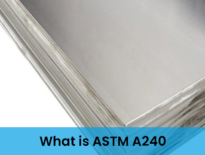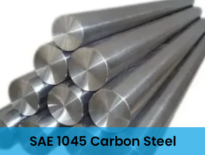Stainless steel is available in various grades, each with distinct chemical compositions, tensile strengths, and other properties. Among the most popular are 304 and 430 stainless steel. Let’s explore the unique features and benefits that these two grades offer.
The market offers a variety of stainless steel grades, each designed for specific applications due to unique characteristics. Two of the most common and versatile are Grade 430 (ferritic, 1.4016) and Grade 304 (austenitic, 1.4301). While they may look nearly identical, their properties differ in ways that make each grade suitable for different uses. These two grades make up a large portion of stainless steel applications, but understanding their distinctions is key to choosing the right one.
What is 304 Stainless Steel?
304 stainless steel is an alloy that combines chromium and nickel, providing excellent corrosion resistance. This makes it ideal for applications where durability and rust prevention are essential.
Additionally, 304 stainless steel is easier to form and shape compared to many other types, making it a preferred choice in projects that require high precision or intricate detailing.
What is 430 Stainless Steel?
430 stainless steel is a stainless steel known for its corrosion resistance and hypoallergenic properties. It’s also highly resistant to harsh environments and chemicals, making it suitable for various uses.
Because it withstands high temperatures and acidic conditions, 430 stainless steel is commonly chosen for food packaging and medical equipment.
430 Stainless Steel vs. 304 Stainless Steel
- Cost :- The cost of stainless steel largely depends on the price of the elements in its composition, which can fluctuate on the global market. 304 stainless steel generally costs more than 430 because it contains 8–10.5% nickel, a costly element that enhances corrosion resistance. 430 stainless steel contains no nickel, making it more affordable, but also less resistant to corrosion.
- Magnetism :- 304 stainless steel, an austenitic grade, typically shows no magnetism, though it may display slight magnetic properties after cold working, especially along cut edges. While 430 is magnetic and 304 usually isn’t, not all magnetic stainless steels are 430, and not all non-magnetic steels are 304.
These distinctions make each grade suitable for different applications based on budget, corrosion resistance needs, and magnetic properties.
Chemical Composition 430 Stainless Steel vs 304
| Grade | C | Si | Mn | P | S | N | Cr | Ni |
|---|---|---|---|---|---|---|---|---|
| 304 | 0.07 | 1.00 | 2.00 | 0.045 | 0.015 | 0.10 | 17.5 – 19.5 | 8.0 – 10.5 |
| 430 | 0.08 | 1.00 | 1.00 | 0.040 | 0.015 | – | 16.0 – 18.0 | – |
Corrosion Resistance
All stainless steels are corrosion-resistant, but some grades perform better than others. 304 stainless steel has nickel, making it significantly more resistant to corrosion than 430. However, 304’s added resistance also increases its cost. When budget is a higher priority than extended lifespan, 430 stainless steel may be a more practical choice.
Pressing / Drawing
The nickel in 304 stainless steel not only boosts corrosion resistance but also makes it easier to press and draw without cracking. 430 stainless steel lacks nickel, which means it’s more prone to cracking or failing under similar pressing conditions. For applications requiring shaping, 304 is generally the preferred option.
Conclusion
304 and 430 stainless steel each have unique strengths. 304 stainless steel offers superior corrosion resistance and ease of shaping, making it ideal for applications where durability and flexibility are key. 430 stainless steel, on the other hand, is more cost-effective and magnetic, making it suitable for applications where budget and magnetic properties are priorities. Choosing between them depends on the specific needs of the application, balancing factors like corrosion resistance, formability, and cost.
FAQs
Is 430 or 304 stainless steel better?
304 stainless steel, with added nickel, offers superior corrosion resistance compared to 430 but is more expensive. For budget-conscious applications, 430 can be a suitable choice.
Is 430 stainless steel safe?
430 stainless steel is food-safe due to its corrosion resistance, though it is slightly more prone to corrosion in acidic environments with prolonged exposure.
Is 403 stainless better than 304?
403 stainless steel is ferritic and 304 is austenitic, so 304 stainless steel is more stable than 403 stainless steel.


